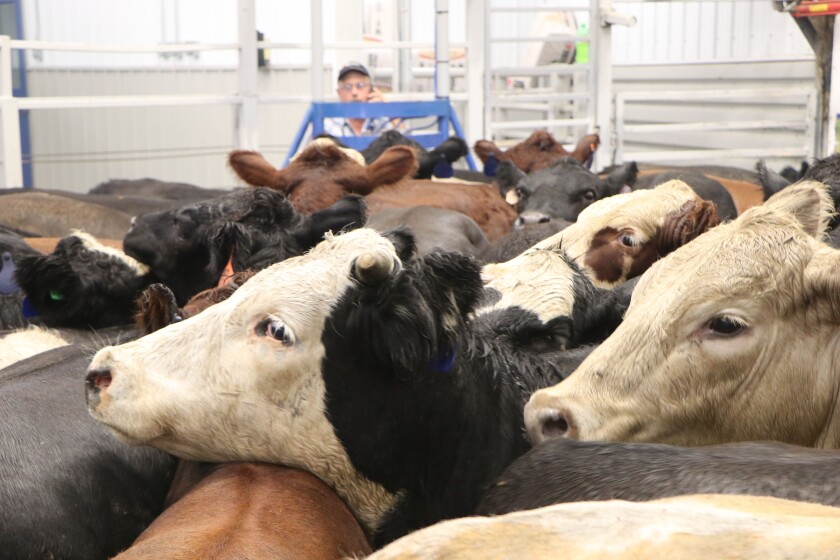Bagley Risk Management : Securing Your Organization Future
Bagley Risk Management : Securing Your Organization Future
Blog Article
Understanding Animals Danger Protection (LRP) Insurance Coverage: A Comprehensive Guide
Navigating the realm of animals danger protection (LRP) insurance can be an intricate undertaking for numerous in the farming sector. This kind of insurance uses a safeguard versus market fluctuations and unpredicted situations that can impact livestock manufacturers. By understanding the ins and outs of LRP insurance, manufacturers can make informed decisions that might safeguard their operations from monetary dangers. From just how LRP insurance functions to the different coverage options offered, there is much to uncover in this thorough guide that might possibly form the method animals manufacturers come close to danger administration in their organizations.

Exactly How LRP Insurance Policy Works
Sometimes, comprehending the technicians of Animals Threat Defense (LRP) insurance policy can be intricate, yet damaging down just how it functions can provide clarity for ranchers and farmers. LRP insurance is a risk management tool designed to protect animals manufacturers versus unanticipated cost decreases. It's essential to keep in mind that LRP insurance policy is not an income assurance; rather, it focuses solely on price risk defense.
Eligibility and Insurance Coverage Options

When it pertains to insurance coverage options, LRP insurance policy offers producers the versatility to pick the coverage level, protection duration, and recommendations that best fit their danger monitoring needs. Protection levels typically range from 70% to 100% of the anticipated finishing worth of the insured animals. Manufacturers can also select protection durations that straighten with their manufacturing cycle, whether they are insuring feeder cattle, fed cattle, swine, or lamb. Recommendations such as rate threat protection can even more personalize insurance coverage to protect against adverse market changes. By comprehending the qualification standards and insurance coverage choices available, animals manufacturers can make enlightened decisions to take care of danger properly.
Pros and Cons of LRP Insurance Policy
When evaluating Animals Danger Protection (LRP) insurance policy, it is crucial for animals producers to consider the drawbacks and benefits intrinsic in this risk monitoring device.

One of the key benefits of LRP insurance policy is its ability to offer security versus a decrease in livestock prices. Furthermore, LRP insurance policy offers a level of versatility, permitting manufacturers to tailor coverage levels and policy durations to suit their specific demands.
One restriction of LRP insurance coverage is that it does not protect versus all types of threats, such as illness break outs or all-natural catastrophes. It is essential for producers to very carefully evaluate their specific danger direct exposure and monetary situation to establish if LRP insurance coverage is the right danger management device for their why not try these out procedure.
Understanding LRP Insurance Coverage Premiums

Tips for Maximizing LRP Perks
Maximizing the benefits of Animals Threat Protection (LRP) insurance coverage calls for strategic planning and positive threat management - Bagley Risk Management. To make the most of your LRP insurance coverage, take into consideration the following suggestions:
Regularly Assess Market Conditions: Remain notified regarding market fads and rate variations in the animals sector. By keeping an eye on these aspects, you can make enlightened choices about when to purchase LRP coverage to safeguard against prospective losses.
Set Realistic Insurance Coverage Degrees: When picking insurance coverage degrees, consider your manufacturing prices, market price of animals, and possible threats - Bagley Risk Management. Establishing practical coverage degrees ensures that you are effectively shielded without paying too much for unneeded insurance coverage
Diversify Your Protection: As opposed to counting only on LRP insurance policy, take into consideration expanding your danger management strategies. Combining LRP with various other danger administration tools such as futures agreements or alternatives can supply detailed protection against market unpredictabilities.
Evaluation and Adjust Protection look at more info Regularly: As market problems alter, periodically review your LRP insurance coverage to ensure it aligns with your existing risk exposure. Changing coverage degrees and timing of purchases can aid enhance your risk defense method. By following these pointers, you can make the most of the advantages of LRP insurance policy and protect your animals operation versus unexpected threats.
Final Thought
In conclusion, livestock threat security (LRP) insurance policy is an important device for farmers to manage the financial dangers connected with their animals procedures. By comprehending just how LRP works, qualification and coverage options, along with the advantages and disadvantages of this insurance policy, farmers can make informed choices to shield their incomes. By meticulously thinking about LRP costs and implementing methods to take full advantage of advantages, farmers can mitigate potential losses and make sure the sustainability of their procedures.
Animals producers interested in obtaining Livestock Danger Defense (LRP) insurance policy can check out a variety of qualification standards and insurance coverage alternatives tailored to their specific livestock operations.When it comes to coverage options, LRP insurance provides manufacturers the versatility to choose the insurance coverage degree, insurance coverage period, and endorsements that ideal match their risk administration requirements.To realize the ins and outs of Animals Risk Protection (LRP) insurance totally, recognizing the aspects influencing LRP insurance costs is essential. LRP insurance premiums are established by numerous components, consisting of the protection level picked, the anticipated cost of livestock at the end of the coverage period, the type of livestock being guaranteed, and the size of the coverage duration.Evaluation and Change Coverage Regularly: As market problems alter, periodically review your LRP insurance coverage to guarantee it lines up with your present danger direct exposure.
Report this page